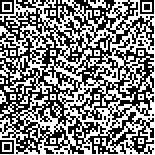下载中心
优秀审稿专家
优秀论文
相关链接
摘要

利用傅里叶相位分析方法与最大相关法结合的云导风技术TCFM(Technique based on combination of Fourier phase analysis and maximum correlation), 对2005-08-05的强热带风暴“麦莎”天气过程中静止气象卫星得到的30min间隔云图时间序列进行导风计算, 并将导风结果应用于中尺度数值模式ARPS(The Advanced Regional Prediction System), 结合其资料分析系统ADAS(ARPS Data Analysis System), 对台风“麦莎”登陆前的过程进行模拟。尽管洋面上常规资料稀缺, 但卫星导风数据的同化使用结果表明, TCFM技术得到的导风资料能够显著改善台风眼壁东部区域的垂直气流活动, 使台风螺旋雨带更加明显, 符合实际。
Cloud tracking technique based on the combination of Fourier phase analysis and maximum correlation (TCFM) is employed to retrieve cloud motion vectors for sever tropic storm “Masta” from geostationary meteorological satellite FY-2C image series with a 30min interval on August 5, 2007. The retrieved data are assimilated into the numerical model ARPS (the Advanced Regional Prediction System) by means of its data analysis system ADAS for the period before “Masta” landed onto ground. Though conventional wind observations are rare over sea areas, the experiment with satellite-derived winds from TCFM technique shows that the cloud motion wind data can improve the vertical wind features in the east of eye wall and make the helical rainband more realistic.

